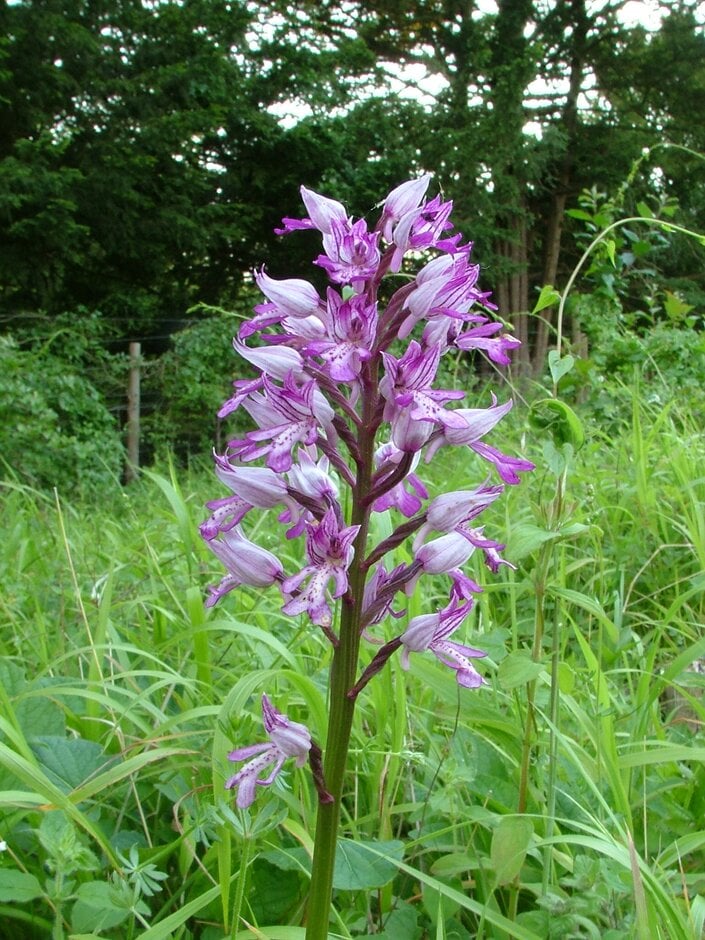Orchis militaris
military orchid
A terrestrial orchid with oval to oblong leaves forming a basal rosette and sturdy stems up to around 50cm tall bearing 10-40 flowers forming a dense pinkish to reddish-purple cylinder. Individual flowers are characterised by a 'helmet' of pink-flushed sepals, a whitish 'body' with crimson hairs and lobes forming 'arms' and 'legs'

Size
Ultimate height
0.1–0.5 metresTime to ultimate height
2–5 yearsUltimate spread
0.1–0.5 metresGrowing conditions
Moisture
Moist but well–drainedpH
Alkaline, NeutralColour & scent
| Stem | Flower | Foliage | Fruit | |
| Spring | Pink Purple Red White | Green | ||
|---|---|---|---|---|
| Summer | Pink Purple Red White | Green | ||
| Autumn | ||||
| Winter |
Position
- Full sun
- Partial shade
Aspect
West–facing or East–facing or South–facing
Exposure
Exposed or Sheltered Hardiness
H4Botanical details
- Family
- Orchidaceae
- Native to GB / Ireland
- Yes
- Foliage
- Deciduous
- Habit
- Columnar upright
- Genus
Orchis are tuberous, terrestrial orchids with rosettes of light to dark green leaves, sometimes purple-spotted, and dense, upright spikes of delicate, purple, red, pink, green, yellow or white flowers
- Name status
Correct
How to grow
Cultivation
Grow in a moist but well-drained, alkaline soil in full sun or partial shade
Propagation
Propagate by seed
Suggested planting locations and garden types
- Cottage and informal garden
- Wildlife gardens
- Wildflower meadow
- Flower borders and beds
Pruning
No pruning required
Pests
Diseases
Generally disease-free
Get involved
The Royal Horticultural Society is the UK’s leading gardening charity. We aim to enrich everyone’s life through plants, and make the UK a greener and more beautiful place.